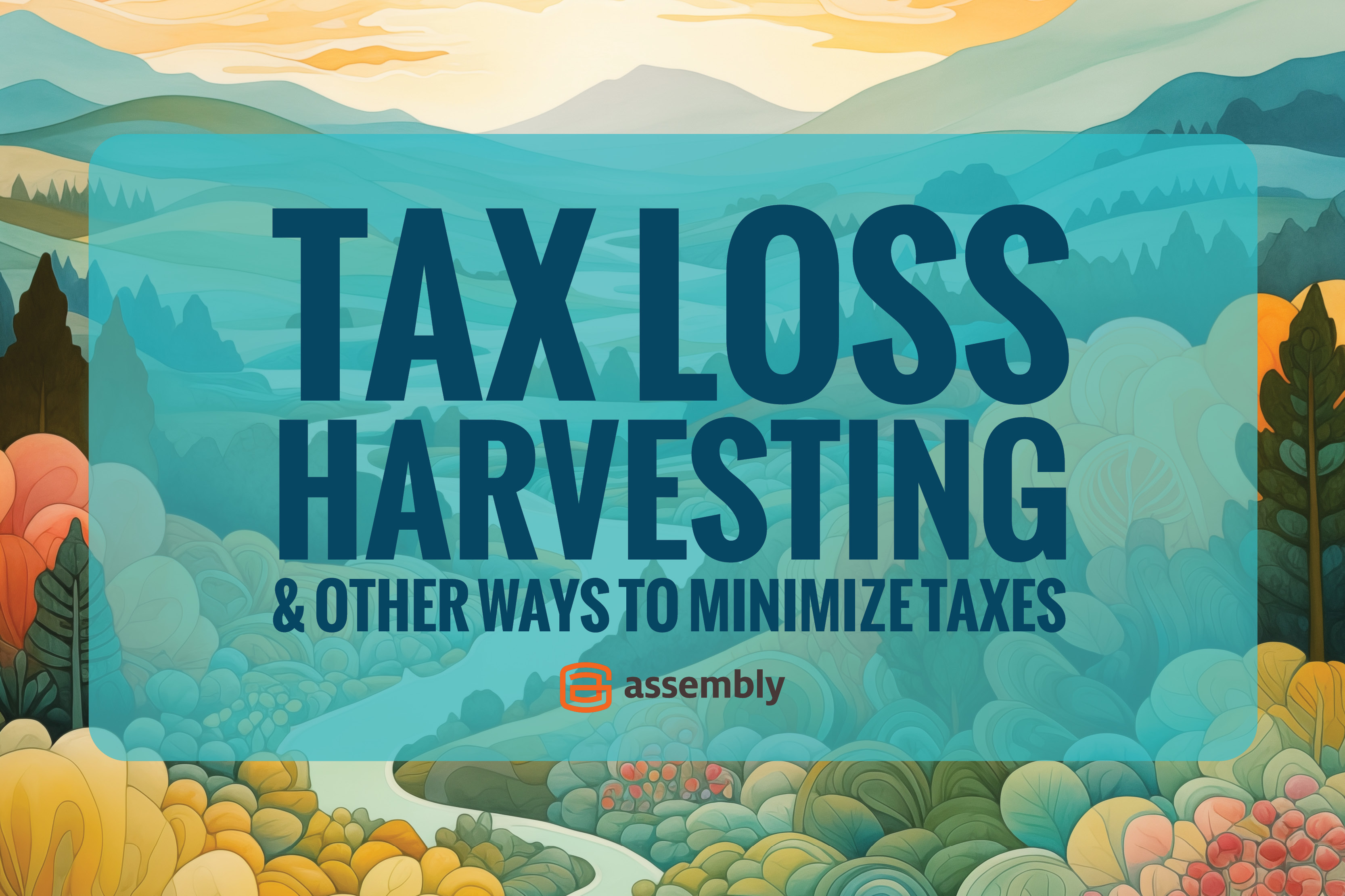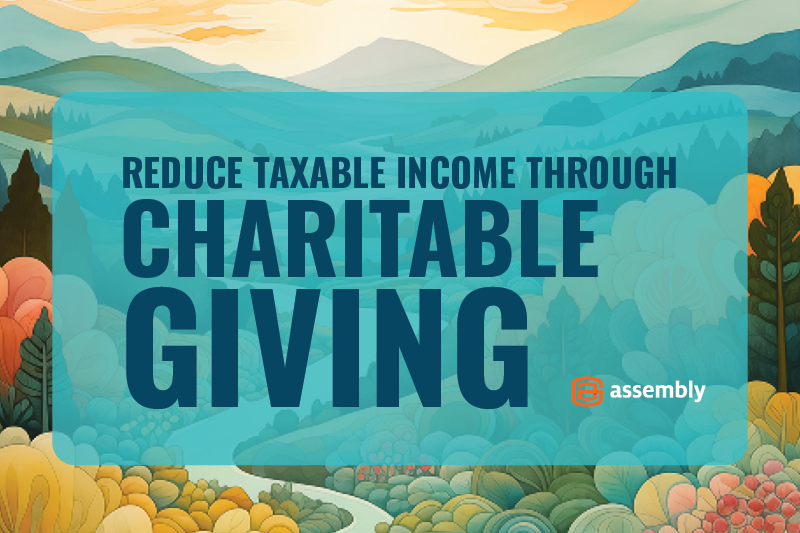Navigate Common Financial Challenges
Financial challenges come in different shapes and sizes. Some build up over time, others are completely unexpected. Below is a list of the most...
4 min read
 Doug Hutchinson
:
Apr 23, 2024 11:52:49 AM
Doug Hutchinson
:
Apr 23, 2024 11:52:49 AM

There’s no such thing as a one-size-fits-all financial strategy. A solution that works for someone with a diverse portfolio won’t be a good fit for someone with a high percentage of their wealth in real estate, private equity or company stock.
On top of everything else, there are ever-changing tax laws. Even financially-savvy people can start to wonder, “Am I doing the right thing?”
The good news is, you don’t have to make important decisions in a vacuum. An experienced wealth manager can help you create a custom plan to minimize your tax burden and achieve your financial goals. Below are just a few examples of how we help clients plan for a secure, sustainable future.
Disclaimer: Assembly is neither an attorney nor accountant, and no portion of this content should be interpreted as legal, accounting or tax advice. Individuals should consult with an investment professional, attorney or tax professional regarding their specific investment, legal or tax situation.
If you have securities that have decreased in value (unrealized losses), you can sell the underperforming assets to offset capital gains taxes you owe on profitable investments.
More information about tax-loss harvesting is available on the IRS website. This article from Charles Schwab has some helpful examples of how tax loss harvesting works.
When you donate stock or other securities to charity, you get a tax deduction and the wonderful feeling that comes with making a positive impact.
By gifting appreciated stock to charity, you can write off the full market value of the stock, up to 60% of your adjusted gross income. But don’t take action before consulting a financial professional; 20%, 30%, or 50% limits may apply. Also, you must transfer the shares directly to the charity (vs. selling the shares and donating the proceeds) to avoid paying capital gains tax.
IRA owners 70½ or older who want to avoid a higher tax bracket should consider QCDs. Qualified charitable distributions allow you to reduce your adjusted gross income (AGI) while supporting one or more charitable organizations. Qualified taxpayers who are at least 73 years old may make QCDs instead of taking required minimum distributions (RMDs).
When set up correctly, charitable donations from a regular IRA do not increase your taxable income; but distributions must go directly to a qualified charity. If the organization does not qualify, or if payments go to the IRA owner first, the tax deduction does not apply.
Learn more about the pros and cons of QCDs in our article: How to Reduce Taxable Income Through Charitable Giving.
A donor-advised fund (DAF) allows you to support one or more charitable organizations in a fulfilling and impactful way while enjoying a significant tax deduction. Once established, your donations grow tax-free and you can guide the distribution of funds and investments.
You can contribute:
One of our clients had two life insurance policies they no longer needed. By using the policies to create a donor-advised fund, the client received an immediate $60,000 tax deduction and left a lasting legacy in their local community.
Investment plans, such as a 401(k), allow you to reduce your tax liability by deferring some of your income, but there are limits.
A good way to reduce your state income tax burden is to own US Treasuries since the interest that you earn from Treasuries is exempt from state and local taxes. If you own a money market fund or ETF that holds US Treasuries, then some (or even all) of the dividends that you receive from that fund or ETF are exempt from state and local taxes.
When you file your taxes, it is up to you to determine how much of your dividends were from US Treasuries. This information is available on the money market fund company or ETF company website.
Let’s say you have two funds that own US Treasuries – and those two funds collectively paid out $10,000 in dividends last year. One fund is a bond ETF that has 60% of its $7,000 in dividends attributable to US Treasuries and the other is a money market fund that has 100% of its $3,000 in dividends attributable to US Treasuries. How much of your $10,000 dividend income is exempt from state and local taxes?
Fund |
Dividend Amount |
% Treasuries |
Exempt Dividends |
| Bond ETF | $7,000 | 60% | $4,200 |
| Money Market Fund | $3,000 | 100% | $3,000 |
In this scenario, $7,200 of your $10,000 in dividends from these two funds are exempt from state and local taxes.
Note that the $7,200 in this scenario is still subject to federal income taxes. Nevertheless, investing in US Treasuries is a good way to limit your state income tax burden, especially if you live in a high tax state or you are in a high income tax bracket.
Don’t let complex tax laws keep you from building a prosperous financial future. We can help you:
Whether you’re ready to set up a donor-advised fund or just want a second opinion on your existing strategy, we’re here to help.
Questions? Let’s Assemble!
Related Reading:
How to Reduce Taxable Income Through Charitable Giving
Retirement Planning: Different Strategies for Different Goals
Do You Have a Plan to Overcome These Common Financial Challenges?
Fill out the form to be notified about new articles.

Financial challenges come in different shapes and sizes. Some build up over time, others are completely unexpected. Below is a list of the most...

Charitable donations are an effective way to reduce your taxable income while also giving back to your community. According to a recent survey, 64...

When we talk with clients about saving and investing for the future, the conversation usually steers toward retirement planning – IRAs, 401(k)s,...